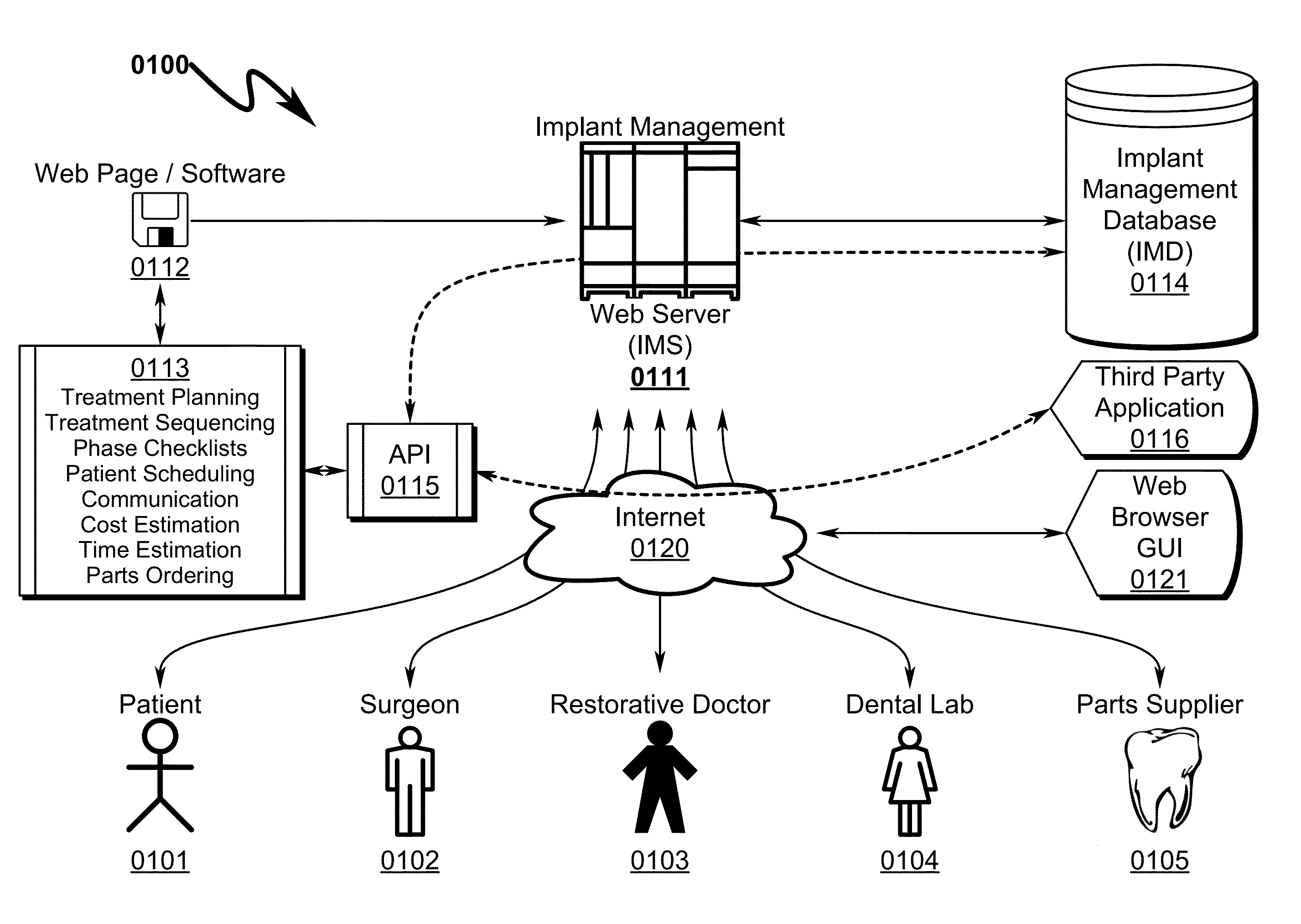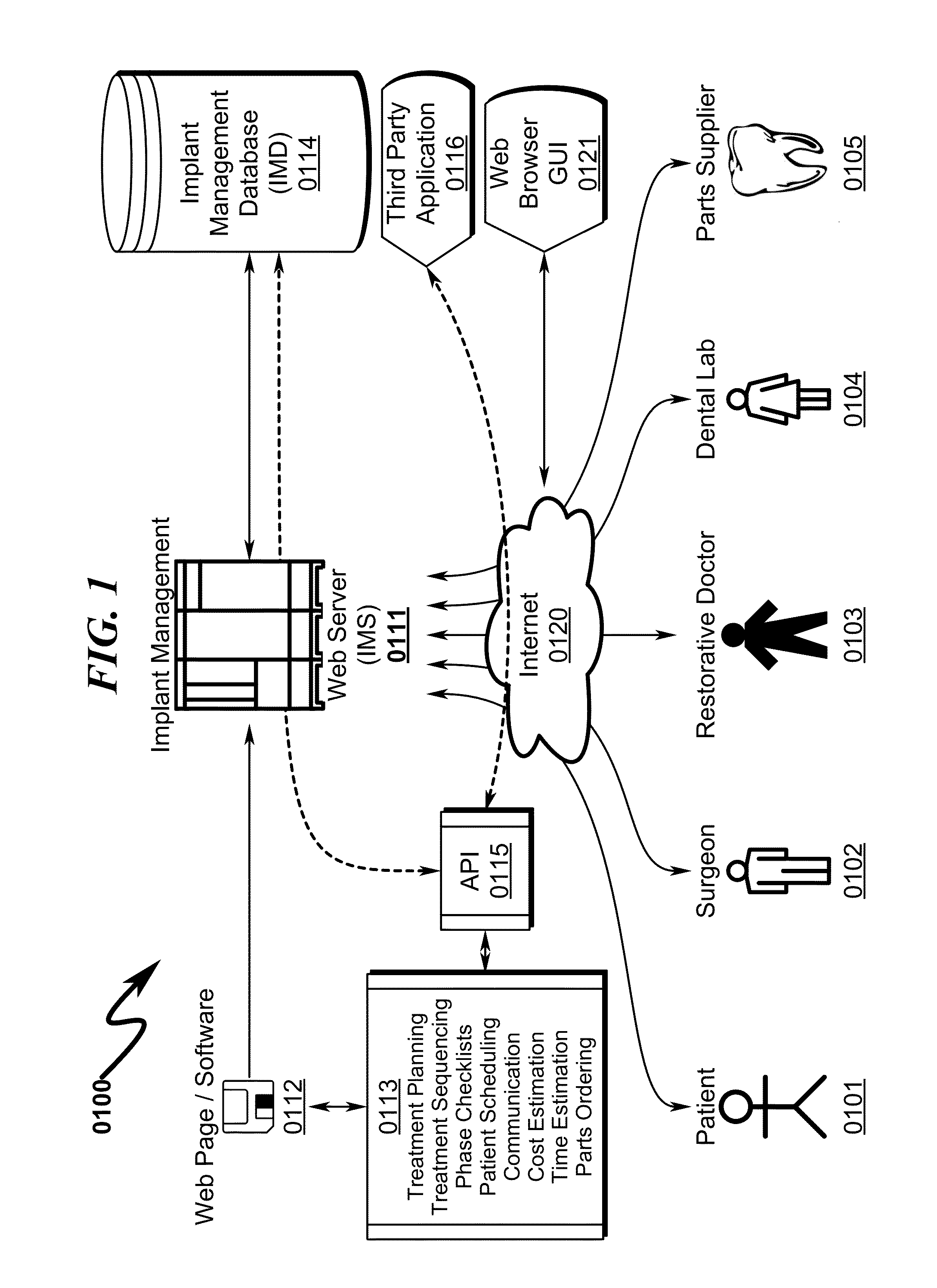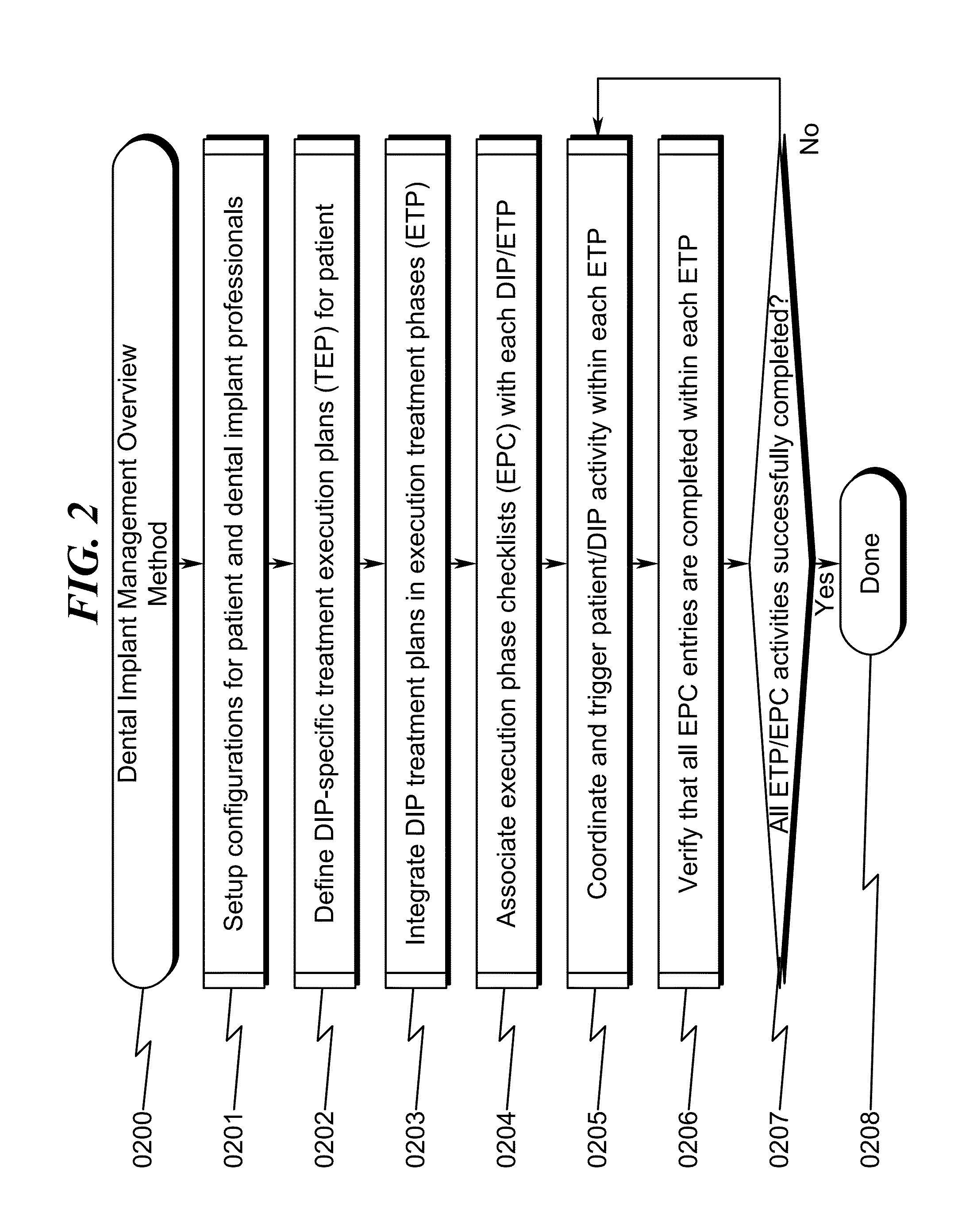Despite this opportunity for patient service, most dental professionals are overwhelmed, overworked, and under-prepared to meet this demand.
As a result, only 50% of the approximately 177,000 dentist in the United States perform dental implants in their daily practice.
The complexity of coordinating and managing dental
implant procedures is a significant factor in this low participation rate.
Recent statistics indicate that approximately 65% of the dental
implant procedures performed result in undesirable outcomes and patient dissatisfaction due to a failure to properly plan and execute the dental implant procedure.
This poor performance may be the result of a variety of factors, including any or all of the following:Participant Coordination.
The dental implant process has a relatively long time scope that may require a year or more to successfully execute.
Maintaining forward
momentum for all participating parties during this lengthy time scope is very difficult in most circumstances.Communication.
Generally speaking, the more parties that are involved in a
dental procedure, the more difficult it is to ensure that adequate communication between the parties can be maintained during the entire process to ensure that no one participant “drops the ball” with respect to their scope of responsibility.Plan Generation.
Without a centralized plan of execution, the dental implant process often becomes confused.
This
confusion often results
in patient dissatisfaction with respect to procedure cost and execution timeframes.Document Integration and Execution Status.
All of this information is currently uncoordinated within the dental implant industry, resulting in significant inefficiencies as well as general customer dissatisfaction regarding multiple billing entities and lack of unified cost generation procedures.Patient Expectation Management.
Current dental implant procedures often have no regard for managing patient expectations regarding the procedure.
Often this dissatisfaction is the result of the patient not being provided a comprehensive
cost estimate for the individual costs associated with the procedure and where these costs will be allocated.
Since current dental implant procedures involve the operation of several different professionals (surgeon, restorative doctor,
dental laboratory, dental implant parts supplier, etc.), the lack of coordination of these participants often results in inefficiencies in
work flow within the domain of each professional.
This can result in time or billing gaps that reduce overall profit for each professional.
Currently there is no methodology in place to improve this loss of income or improve
throughput efficiency.
The current prior art
standard of care in the dental implant industry incorporates all of these factors and as stated previously, on average results in an unacceptable outcome for the dental implant procedure.
Since dental implant patients must interact with at least three distinct dental implant professionals (DIPs) in affecting a dental implant procedure (surgeon, restorative doctor, dental lab), the coordination of a
treatment plan among these professionals is often a fragmented and disorganized process.
However, this information is local only to the particular DIP practice office and cannot be shared among the various DIPs or the patient.
As a result, critical information necessary to properly treat the patient is often not communicated to the other DIPs responsible for
patient treatment.
The prior art as detailed above suffers from the following deficiencies:
Dental implant professionals are often unable to effectively communicate with each other and the patient.
Dental implant professionals are often unable to generate an
execution plan that effectively coordinates all professionals associated with the dental implant procedure.
Dental implant professionals are often unable to efficiently schedule their time with patients and each other to maximize profit margins for their dental practice.Patients are often unaware of their progress within the overall dental implant procedure
execution plan.Patients often have no idea as to the total cost of the implant procedure or when these costs will be incurred.Dental implant professionals often are forced to keep significant inventory of dental implant parts on hand in anticipation of future dental patient needs.
This can result in USD$100,000.00 or more of unnecessary parts inventory.
There is currently no methodology of reducing this cost overhead in dental implant practices.
While some of the prior art may teach some solutions to several of these problems, the core issues of allowing dental implant professionals to effectively manage dental implant procedures in a cooperative manner with patients has not been addressed by the prior art.
As a result, more than half of the dental implant procedures performed result in an undesirable outcome, resulting
in patient dissatisfaction and loss of revenue for dental implant professionals.
 Login to View More
Login to View More  Login to View More
Login to View More 


